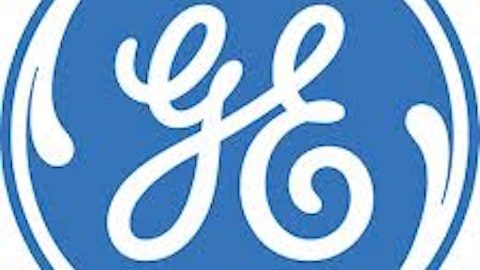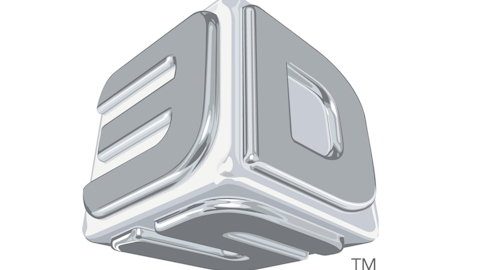When the Dow Jones Industrial Index was created it contained only 12 companies. One of these original companies was General Electric Company (NYSE:GE), and today GE is the only company to have been continuously included in the index over its entire history.
During that time GE has grown to be one of the largest and most profitable companies in the world. While GE’s financial arm nearly led to catastrophe during the financial crisis of 2008-2009, the company has scaled down this division to reduce risk. In 2006 half of GE’s profits came from the financial division while it’s now closer to a third.
GE has paid a dividend in every quarter for the last century, but the quarterly payout was cut severely in the wake of the financial crisis. After a $0.31 payment in Q1 2009 the dividend was cut to just $0.10 the following quarter. This coincided with a dramatic drop in the company’s share price.
Since the dividend cut both the stock and dividend have increased substantially, although still not even close to pre-crisis levels. After raising the quarterly dividend at the end of 2012 by nearly 12%, putting the dividend yield at about 3.4%, is GE a solid dividend stock?
The Competition
General Electric is somewhat of a difficult company to characterize, given its broad product offerings. One similar type of company is Siemens AG (NYSE:SI), the German conglomerate, which operates in many of the same industries as GE. Siemens currently pays a dividend yielding around 3.9%, paying an annual dividend instead of a quarterly one. I’ll also consider Honeywell International Inc. (NYSE:HON), which pays a 2.33% dividend yield, and 3M Co (NYSE:MMM), which pays a dividend yield of 2.3%. All of these companies operate in a broad range of industries and offer a large variety of products.
Note: Many sources seem to indicate a much lower dividend yield for Siemens. Siemens’ website states that the most recent dividend payment is 3 Euros, which is equivalent to about $4. Since one ADR is equivalent to one share, this puts the dividend yield at 3.9% instead of the 2.85% quoted elsewhere.
Dividend Growth
While Siemens has the highest dividend yield of these four companies, the dividend growth is equally important. Here’s the past decade of annual dividend payments for these four companies.
Annual Dividend
| Year | GE | SI | HON | MMM |
|---|---|---|---|---|
| 2012 | $0.70 | $4.01 | $1.5275 | $2.36 |
| 2011 | $0.61 | $3.90 | $1.37 | $2.20 |
| 2010 | $0.46 | $3.51 | $1.21 | $2.10 |
| 2009 | $0.61 | $2.24 | $1.21 | $2.04 |
| 2008 | $1.24 | $2.03 | $1.10 | $2.00 |
| 2007 | $1.15 | $2.37 | $1.00 | $1.92 |
| 2006 | $1.03 | $1.89 | $0.9076 | $1.84 |
| 2005 | $0.91 | $1.62 | $0.8252 | $1.68 |
| 2004 | $0.82 | $1.63 | $0.75 | $1.44 |
| 2003 | $0.77 | $1.38 | $0.75 | $1.32 |
Note: I’ve converted Siemens dividend payments from EUR into USD using roughly the conversion rate at the time of payment.
Dividend data for GE, SI, HON, and MMM
Both Honeywell and 3M avoided cutting their dividends due to the financial crisis, although Honeywell failed to increase it on a couple of occasions over the past decade. Honeywell’s dividend has grown at an annualized rate of 8.22% over the past decade while 3M’s dividend saw slower growth of 6.67%. With yields around 2.3% for both companies this slow growth makes Honeywell and 3M look unattractive from a dividend perspective.
From 2003 to 2008 GE raised its dividend at an annualized rate of just about 10%. Since 2010 annualized growth was even higher at 23.36%. The big problem with GE is the drastic cut in 2009, leaving 2012’s dividend payment lower than that of 2003’s. Because most of GE’s problems were caused by the financial unit, this seems to me to be a one-time event. It was a huge failure of the company but hopefully they’ve learned from it.
Siemens dividend looks a bit choppy – this is mainly due to the conversion from EUR to USD. In EUR the dividend was never reduced over the last decade, while in USD conversion rates caused occasional drops. For comparison in EUR the dividend grew from 1.10 EUR to 3 EUR from 2003-2012, an annualized rate of 11.79%. In USD this growth rate was a bit higher at 12.58%.
Is It Sustainable?
Before drawing any conclusions lets look at the payout ratio for both GE and Siemens. This is the percentage of the free cash flow paid out as dividends each year. In the TTM period GE paid out 47.6% of FCF in dividends. In 2011 this ratio was only 31.3%, the increase being a result of a decrease in FCF. Even so, 47.6% is fairly low. Siemens paid out 57.53% of FCF in dividends in the TTM period.
GE has more room to expand its dividend via payout ratio expansion. Siemens future dividend growth will most likely follow their earnings growth. One thing to note is that the 3 EUR dividend payment was held constant for the past two years. This would suggest that Siemens future dividend growth will be slower than in the past. GE, on the other hand, should be able to growth the dividend much faster than Siemens, at least for a while anyways. The question is: Does Siemens superior yield make up for this?
How Fast Does It Need To Grow?
I’ll use a dividend discount model calculation to determine at what rate each company must grow its dividend in order to justify its current share price. I’ll use a two-stage model where the next 10 years sees elevated growth and then growth subsides to a 3% perpetual rate. For a discount rate I’ll use 8%, roughly the long term growth rate of the market as a whole. The calculations are shown below.
General Electric


Siemens


GE needs to grow its dividend at 8.625% annually for the stock to be fairly valued. Given the low payout ratio and high growth over the past couple of years GE will most likely surpass this. Siemens, because of its higher yield, only needs to grow its dividend at a rate of 5.768%. This is far lower than the historical rate, although the recent stagnant dividend (in EUR) is a cause for concern. Another cause for concern is that the dividend is tied to the conversion rate between Euros and Dollars. This seems like a fairly large area of uncertainty and could have a negative effect on the dividend.
The Bottom Line
Both GE and Siemens look undervalued here in terms of dividends. I tend to favor GE more because of the prospect of higher dividend growth in the next few years and the currency issue surrounding Siemens. Of course, Siemens wasn’t forced to cut its dividend during the financial crisis, which is a sign that the company may understand risk a bit better than GE. Both stocks look like good candidates for a dividend investor, though.
The article Two Outstanding Dividend Stocks originally appeared on Fool.com and is written by Timothy Green.
Copyright © 1995 – 2013 The Motley Fool, LLC. All rights reserved. The Motley Fool has a disclosure policy.




